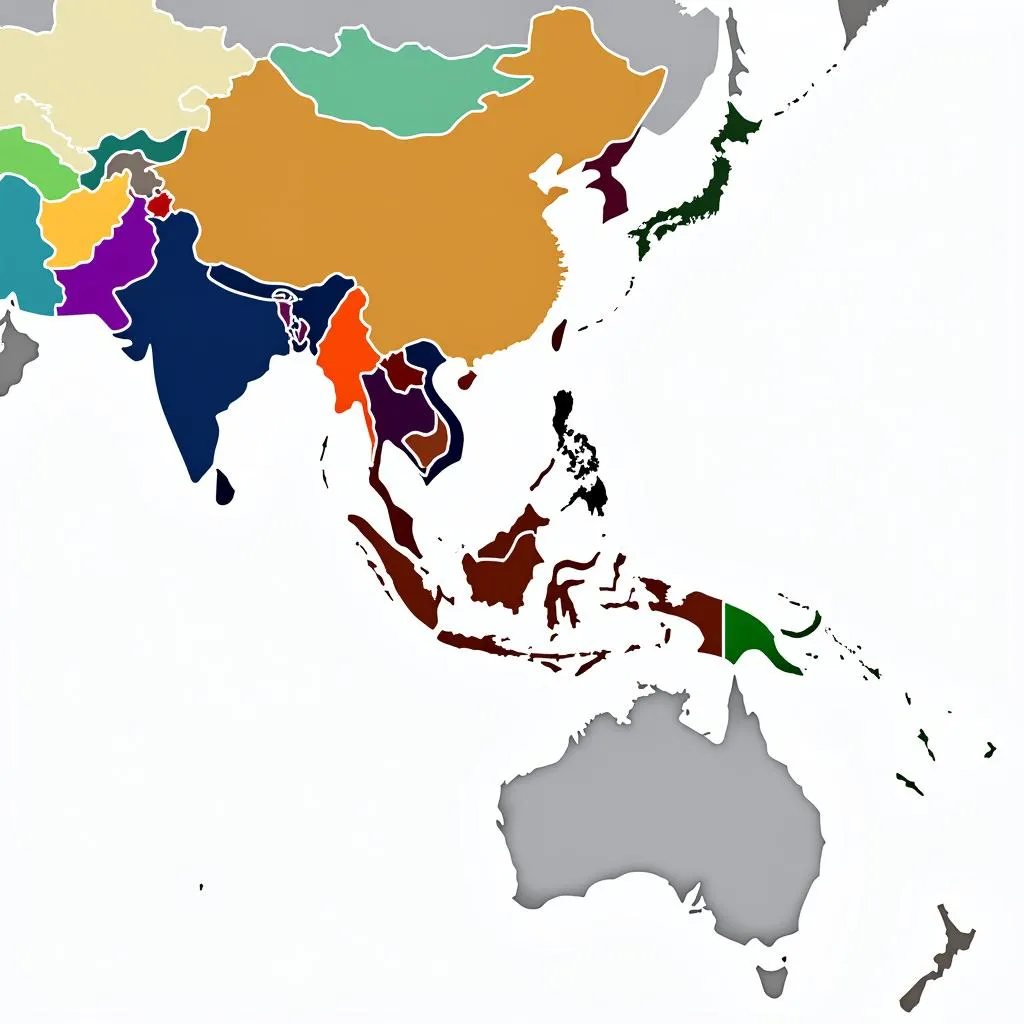Southeast Asia, a region teeming with biodiversity, is home to a fascinating array of wildlife. From the dense jungles of Borneo to the crystal-clear waters of the Coral Triangle, “10 Hewan Asean” offers a glimpse into some of the most iconic and unique animals that call this region home. These creatures represent the rich tapestry of life found within the Association of Southeast Asian Nations (ASEAN) and highlight the importance of conservation efforts to protect this natural heritage.
Majestic Mammals of ASEAN
ASEAN boasts a diverse range of mammals, each playing a vital role in their respective ecosystems. The orangutan, found in the rainforests of Borneo and Sumatra, is a critically endangered species known for its intelligence and arboreal lifestyle. Another iconic mammal is the Malayan tiger, a symbol of power and grace, facing immense threats due to habitat loss and poaching. The Asian elephant, revered for its strength and wisdom, is also an integral part of ASEAN’s cultural heritage. These magnificent creatures remind us of the interconnectedness of life and the urgent need for their protection.
Colorful Birds of Paradise
The skies of ASEAN are ablaze with the vibrant plumage of countless bird species. The rhinoceros hornbill, with its distinctive casque, is a symbol of the region’s rich avian diversity. Birds of paradise, found in New Guinea and surrounding islands, are known for their extravagant displays and intricate mating rituals. From the tiny sunbirds to the majestic eagles, the birds of ASEAN play a vital role in pollination and seed dispersal, contributing to the overall health of the ecosystems.
What are some of the most colorful birds in ASEAN? Birds of paradise, rhinoceros hornbills, and various species of parrots and kingfishers are just a few examples of the vibrant avian life found in the region.
Slithering Serpents and Scaly Wonders
ASEAN’s reptile diversity is equally impressive. From the reticulated python, one of the longest snakes in the world, to the Komodo dragon, the largest living lizard, these creatures represent the fascinating world of reptiles. The king cobra, a highly venomous snake, holds a significant place in local folklore and traditions. These reptiles, while often misunderstood, play crucial roles in controlling rodent populations and maintaining the balance of the ecosystem.
Where can you find the Komodo dragon? The Komodo dragon is endemic to four Indonesian islands: Komodo, Rinca, Flores, and Gili Motang.
Diverse Aquatic Life
The waters of ASEAN teem with an astonishing variety of aquatic life. The whale shark, the largest fish in the world, can be found in the waters surrounding the Coral Triangle. Coral reefs, vibrant ecosystems supporting countless marine species, are a defining feature of the region. Sea turtles, graceful creatures that migrate vast distances, are also an integral part of ASEAN’s marine biodiversity. These aquatic wonders highlight the importance of protecting the region’s oceans and coastal ecosystems.
Which is the largest fish in the world found in ASEAN waters? The whale shark is the largest fish in the world and can be found in the waters of ASEAN, particularly around the Coral Triangle.
Protecting ASEAN’s Natural Heritage
The 10 Hewan ASEAN represent just a small fraction of the region’s incredible biodiversity. Protecting these animals and their habitats is crucial for maintaining the ecological balance and preserving the natural heritage of Southeast Asia for future generations. Conservation efforts, including habitat protection, anti-poaching measures, and sustainable tourism practices, are essential for ensuring the survival of these magnificent creatures.
“Protecting the biodiversity of ASEAN is not just a regional responsibility; it’s a global imperative,” says Dr. Anya Sharma, a leading conservation biologist specializing in Southeast Asian wildlife. “These animals play crucial roles in maintaining the health of our planet, and their loss would have far-reaching consequences.”
In conclusion, exploring the 10 Hewan ASEAN provides a captivating glimpse into the incredible biodiversity of Southeast Asia. These iconic animals represent the rich natural heritage of the region and underscore the importance of conservation efforts to protect these magnificent creatures and their habitats for generations to come.
FAQ
-
What are some endangered animals in ASEAN? Orangutans, Malayan tigers, and Javan rhinoceros are some of the endangered animals found in ASEAN.
-
What is the Coral Triangle? The Coral Triangle is a marine area located in the western Pacific Ocean, encompassing parts of Indonesia, Malaysia, the Philippines, Papua New Guinea, Timor-Leste, and the Solomon Islands, known for its extraordinary marine biodiversity.
-
Why is biodiversity important in ASEAN? Biodiversity is essential for maintaining ecological balance, providing ecosystem services, supporting livelihoods, and preserving cultural heritage in ASEAN.
-
What are some threats to ASEAN’s wildlife? Habitat loss, poaching, illegal wildlife trade, and climate change are some of the major threats to ASEAN’s wildlife.
-
How can I contribute to wildlife conservation in ASEAN? Supporting reputable conservation organizations, promoting sustainable tourism practices, and raising awareness about wildlife conservation are some ways to contribute.
-
What is the role of ASEAN in wildlife conservation? ASEAN plays a crucial role in coordinating regional efforts for wildlife conservation, including developing policies, implementing conservation programs, and promoting collaboration among member states.
-
Where can I learn more about ASEAN’s wildlife? You can find more information about ASEAN’s wildlife through online resources, documentaries, and visiting national parks and wildlife sanctuaries in the region.
Need support? Contact us 24/7: Phone: 0369020373, Email: [email protected], or visit us at: Thon Ngoc Lien, Hiep Hoa, Bac Giang, Vietnam.
